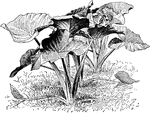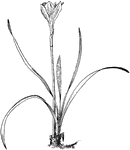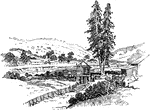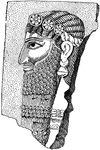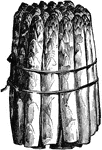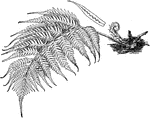
Woodwardia Orientalis
Fern belonging to the Blechnaceae family, native to warm subtropics in the Northern Hemisphere.

Xeranthemum Annuum
A commonly cultivated species of flowers with purple flowers native to Europe and Iran.

Confluence of the Tigris and Euphrates
"In their upper course the Euphrates and the Tigris traverse a region of steppes broken by rocky ridges…

Blue Daisy
This perennial is native to both South Africa and Australia; plant bears blue daisy-like flowers.

Bald Cypress in Cultivated Form
An image of a bald cypress, in pyramidal cultivated form. It is otherwise known as taxodium distichum,…
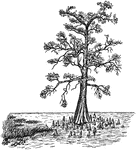
Bald Cypress in Swamp Form
An image of a bald cypress in swamp form, with aerating roots, or knees. It is otherwise known as taxodium…

American Water Hemlock
Also know as cicuta maculata. This plant is native to temperate areas of the Northern Hemisphere, and…

Orange Hawkweed
Also known as pilosella aurantiaca, or Devil's Paintbrush. It is native to the alpine regions of central…

Canada Thistle
Also known as cirsium arvense, or Creeping Thistle. It is native throughout Europe and northern Asia.…
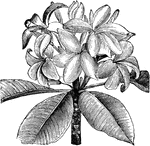
Frangipangi
Also known as Plumeria. It is native of tropical America, and is made up of thickish branches and white,…
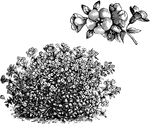
Polemonium Reptans
A flower that is native to eastern North American. It is either blue or white with leafy stems.
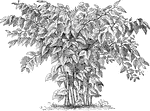
Giant Knotweed
Also known as Polygonum sachalinense. It is native to northeastern Asia and northern Japan. The flowers…

Pomegranate
Also known as Punica granatum. The trees on which these fruits are born range between 15 feet and 20…

Ficus Benjamina
Known as a weeping fig, commonly seen in stores as ficus. This tree is native to southern and southeastern…
Berberis Vulgaris
A shrub that is native to Europe, northwest Africa, and western Asia. It reaches up to 13 feet in height,…
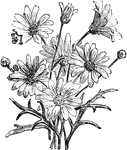
Pyrethrum Frutescens
A shrubby flower with white petals. It can grow up to 3 feet, and is native to the Canary Islands.

Pyrus Japonica
A tree which produces dark red flowers and fragrant green leaves. The leaves are oval and serrated.…
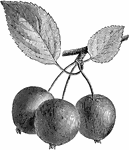
Pyrus Malus Bertini
A plant which produces brightly-colored fruits, approximately 1.5 inches in diameter. They generally…

Pyrus Malus Crataegina
A plant which consists of long, persistent calyx segments. They generally grow up to 20 feet in height,…
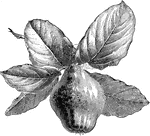
Quince
Also known as Cydonia oblonga. It is native to southwest Asia, and produces yellow pear-shaped pome…
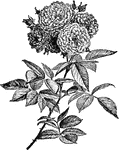
Multiflora Rose
Also known as Rosa multiflora. It is a shrub which grows small corymbs of flowers. It is native to eastern…
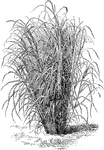
Saccharum Aegyptiacum
A crowded species of sugar cane. The branches grow up to 12 inches in length, and the stems up to 7…
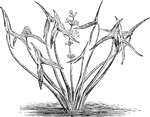
Arrowhead
Also known as Sagittaria sagittifolia. It is a flowering plant that is native to the wetlands of Europe…

Bunker Hill After the Battle
"This picture was drawn by a British engineer a few days after the battle. The view is from the north…

Howe's Headquarters
"When Howe reached that place he found General Sullivan confronting him, and the fishermen of Marblehead,…
View Looking North from Butt's Hill
"The view shows the intrenchments in the foreground. The Americans retreated past the houses in the…
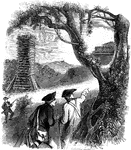
Marion and Lee Capturing Fort Watson
"Marion and Lee could see the light of his camp-fires on the hills in the west. Whatever was done must…
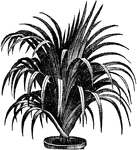
Screwpine
Also known as Pandanus utilis. It is a tropical tree with an edible fruit. It is native to Madagascar…

Lilium Auratum
A true lily that is native to Japan. The flower color is white with gold radial markings and orange…

Easter Lily
Also known as Lilium longiflorum. They are native to Japan and Taiwan, and bears a number of trumpet-shaped,…

Wallacei
"One to three feet high; flowers erect, orange yellow, spotted black, well open and very beautiful.…

Lily of the Valley
Also known as Convallaria majalis. It is native throughout the Northern Hemisphere in Asia and Europe.…
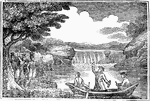
Roger Williams Crossing the Pawtucket River
Roger Williams was the founder of the Providence Plantation in Rhode Island, as well as the first Baptist…
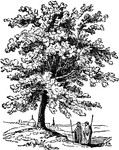
Terebinth Tree
A small deciduous tree, native to the Mediterranean region. It produced the earliest-known form of turpentine,…
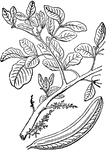
Locust Tree
Also known as a carob tree or Ceratonia siliqua. It is a flowering shrub or tree native to the Mediterranean…
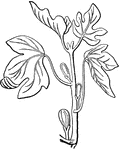
Fig Tree
Also known as ficus. They are native throughout the tropics and are cultivated for the fruit, the fig.…
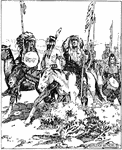
The Return of the Warriors
In the short story of The Arickara Indians, the image depicts the return of the Indian warriors on horses.
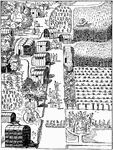
The Towne of Secota
"Picture of an Indian village drawn by John White in 1585 and incorporated in a report to Sir Walter…

Jonathan Edwards
A famous preacher and missionary to Native Americans. He also played a significant role in shaping the…
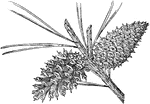
Pine Cone of Tamarack Pine
Also known as Pinus contorta, var. murrayana. The pine cone of a Tamarack Pine tree, native to the Cascade…

Table Mountain Pine Cone
Also known as Pinus pungens. The Table Mountain Pine is native to the Appalachian Mountains.

Western Larch Pine Cone
Also known as Larix occidentalis. A species of larch native to the mountains of western North America.

Alpine Larch Pine Cone
Also known as Larix lyallii. A species of larch native to northwestern North America.

White Spruce Pine Cone
Also known as Picea glauca. A spruce tree native to the northern half of North America.

Engelmann Spruce Pine Cone
Also known as Picea engelmannii. A species of spruce tree native to western North America.

Brewer Spruce Pine Cone
Also known as Picea breweriana. A species of spruce tree native to western North America.
